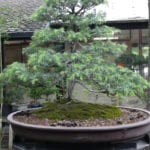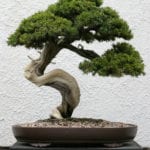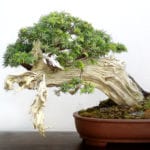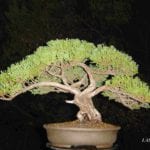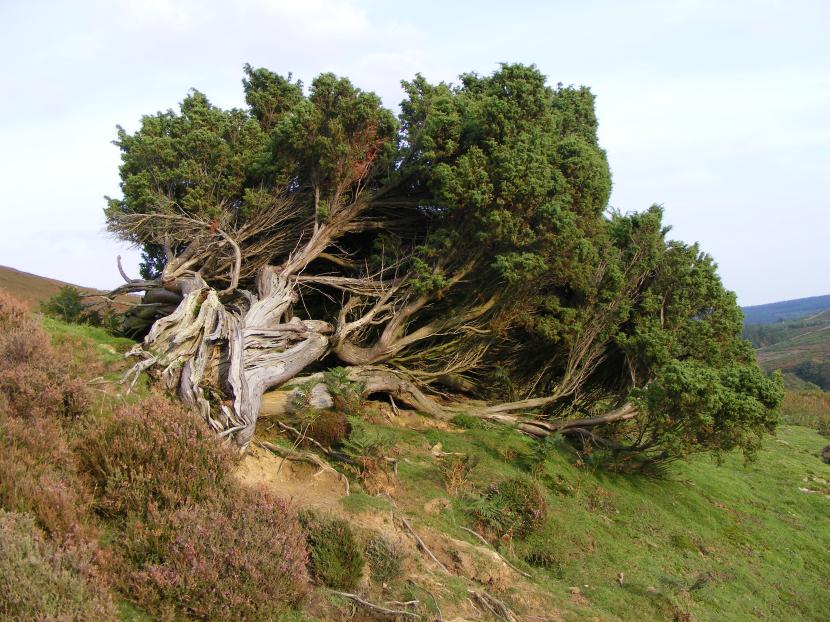
Juniperus communis
El juniper It is a very beautiful conifer that has been used for centuries as a hedge or even as a ground cover in temperate gardens around the world. There are about 12 species belonging to the botanical genus Juniperus. It can be easily confused with the junipers, but there is a main characteristic that differentiates them and that is that, in the case of our protagonist, retains prickly juvenile foliage throughout its life; on the other hand, the Sabine women will lose it over the years.
This is a very interesting plant that does not require much attention to grow. It is very resistant and rustic, tolerating even pruning. Find out more about juniper.
Juniper characteristics
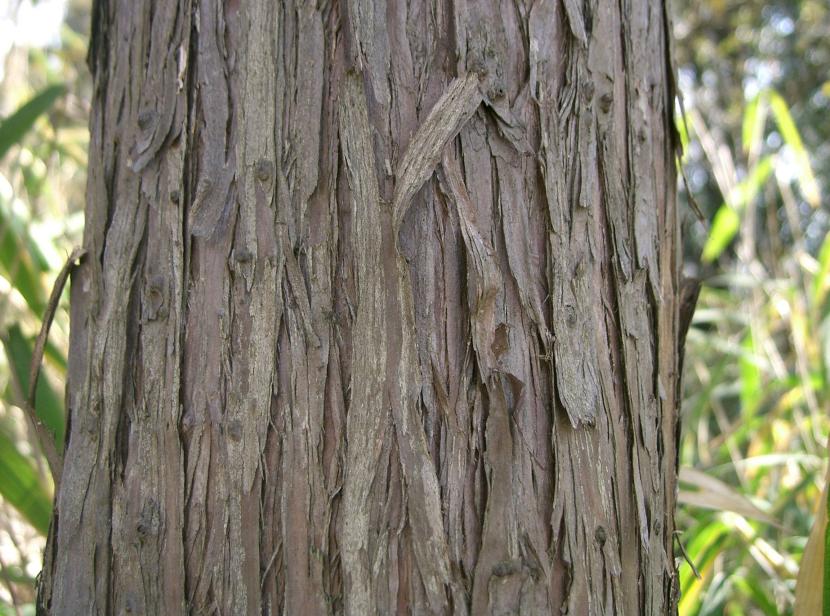
Trunk of Juniperus rigida
Juniper belongs to the botanical genus Juniperus, and to be more specific and to differentiate it from juniper, it is from the section Juniperus sect. junipers. It belongs to the Cupressaceae family and is native to North America, Europe, and Africa. It is a plant with Evergreen, acicular, in clusters of three by three and united at the base, gray-green on the underside and on the upper surface, they have a pale band.
The juniper fruit is what is known as galbulo, which is a kind of fleshy berry that does not open when ripe, which occurs in the second year during the fall season. At first it is glaucous green in color, but in the second autumn it turns bluish and finally, when it is ready, it changes to black. Inside there are about 6 fertile scales, which each house a seed that can take up to 1 year to mature.
Depending on the species, there are columnar or extended bearing. The former attract a lot of attention, as they are very uniform and dense; no branch is too long or too short. In addition, with a height of about 4m, they are excellent as protection hedges. The latter, on the other hand, can be used as ground cover plants, as their long branches cover the ground making the garden look very, very pretty.
Juniper care
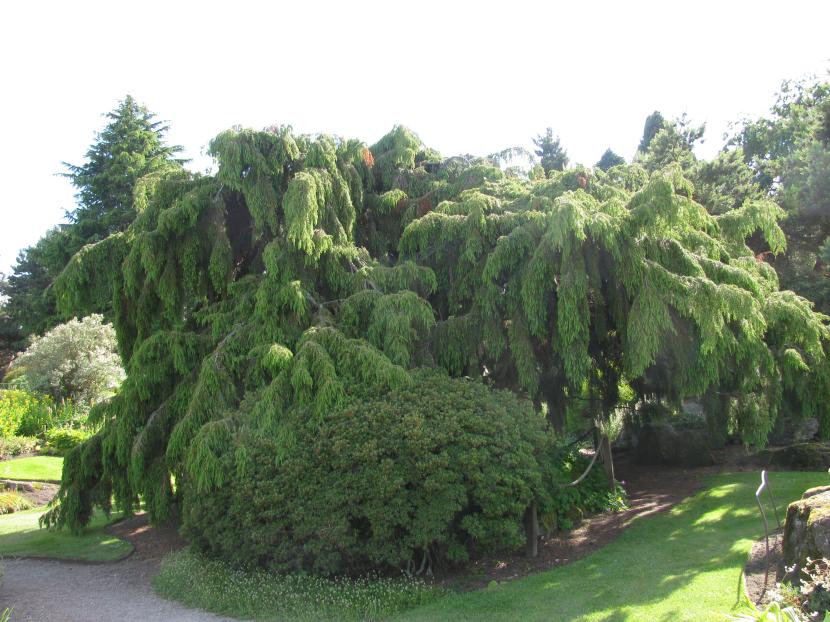
Juniperus rigida
Juniper is a plant that is very easy to grow and is very grateful. For this reason, in addition to being very ornamental, it has become the most popular dwarf conifer. But of course, to be able to enjoy it, you have to know what care it requires to look good. As well, the cares are:
Location
Place your juniper (or junipers 🙂) in an area where it gets direct sun all day. It can grow in semi-shady areas, but it likes direct light better.
Land
It is not demanding in terms of soil type. It can grow indistinctly in those that are calcareous or those that are more sandy.
Irrigation
It is very resistant to drought, but during the first year or if it is kept in a pot It is convenient to water it twice a week in summer and every seven days the rest of the year.
Transplant
Juniper, and in general all conifers, is a plant that does not tolerate transplants very well. The ideal would be to move it from a pot to its final location or to a larger pot in spring, after the risk of frost has passed.
Rusticity
And speaking of frost, you have to know that supports up to -10ºC.
Juniper pruning
Pruning should be irregular, keeping as much as possible the natural shape of the juniper. It is best to trim overgrown branches a bit with pruning shears or a hand saw in spring.
Juniper as Bonsai
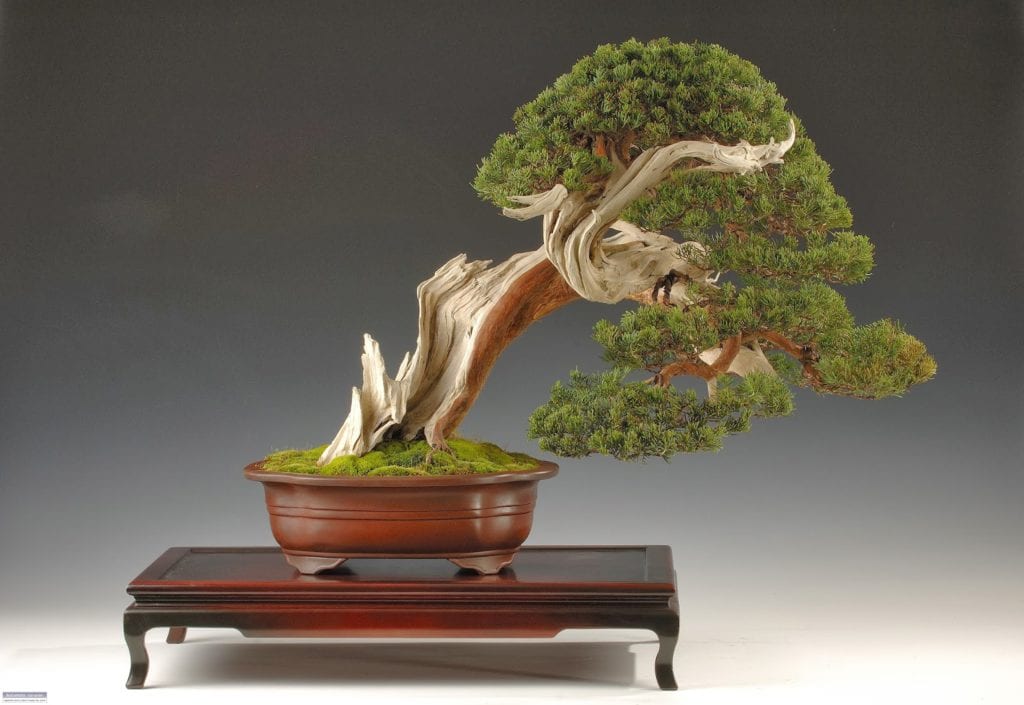
Image - Steve Tolley
Juniper is a plant that, having small leaves and an easily controllable growth rate, apart from its precious trunk, has been used as Bonsai for many centuries. We tell you about their care:
- Location: outside, protect from the summer sun. The rest of the year it should be placed in an area where it hits directly.
- Transplant: the young specimens every 2 years, while the older ones every 4.
- Substratum: very porous, as for example we could mix akadama and kiryuzuna in equal parts.
- Fertilizer: from spring to autumn, we will fertilize with a mineral fertilizer for bonsai, or with a liquid organic fertilizer (for example, guano, algae extract, etc.).
- Irrigation: abundant in summer (if necessary, it can be watered up to 2 times a day, always avoiding excess humidity). The rest of the year, one or two weekly waterings will suffice.
- Pruning: In autumn it must be pruned to give it shape, and during the growth period its leaves will have to be clipped often to keep it within the chosen style.
- Style: it is the perfect plant to work as if it were whipped by the wind. Also highly recommended as a semi-waterfall, with exposed roots or on rocks.
Would you like to enjoy viewing juniper bonsai photos? Here is a sample of what can be done with it:
- Image - Bonsai Capital
- Image - Art Of Bonsai
- Image - LCHR
How to reproduce juniper
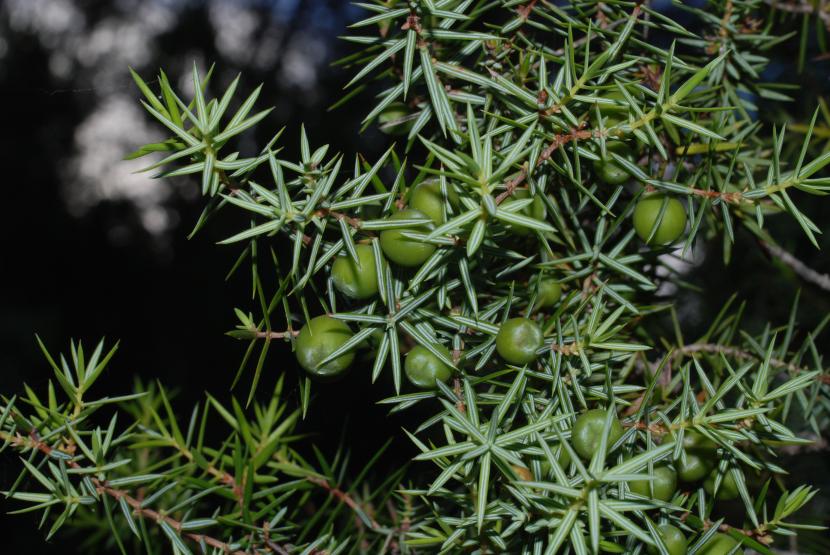
Immature leaves and calbules of Juniperus oxycedrus
Would you like to reproduce your juniper? This is a plant that reproduces by seeds, cuttings or grafts.
Reproduction by seeds
In autumn the ripe galbules have to be collected and the seeds removed from their interior. After, they must be given a 30-minute bath with sulfuric acid for 30 minutes before stratifying in the fridge for 4 months.
To stratify you have to fill a tupperware with vermiculite, sow the seeds, cover them with a little more of this substrate and water a little. It is highly recommended to open it once a week so that the air is renewed and thus avoid the appearance of fungi.
Alternatively sow them in summer, but they will take longer to germinate, since their viability decreases year after year, and is never greater than 50%.
By having a slow growth rate, the plants obtained from seed can be used as rootstock for grafting after 2 years.
Reproduction by cuttings
To reproduce by cuttings, it is advisable to take the branches during the winter, moisten the base and impregnate it with liquid rooting hormones. Then it only remains to plant them in a pot using equal parts peat and perlite, in a very bright area, but protected from direct sun.
It is important that a high humidity is maintained, so the cutting must be sprayed from time to time (once every 10 days for example) or, if you prefer, place glasses with water around. If you can also provide them with background heat of about 27ºC, they will root in less time.
Reproduction by graft
Juniper if you want to reproduce by grafting it is advisable to wait until autumn. Once i arrive, The plants that have a straight trunk will be removed from the seedbed and planted in a pot with peat in a greenhouse (It can be a basic structure with four wooden sticks and transparent plastic).
After about two weeks, you will be able to choose the branches that have the same diameter as the rootstock to be grafted. Make sure the mother plant they come from is healthy, without any signs of pests or disease. Then, you have to do a lateral graft which is called, which consists of making a side cut in the pattern, inserting the branch, and finally fastening it either with adhesive tape for grafts or, much more recommended, with rubber bands.
Now the grafted plants must be placed in, for example, a planter deep enough so that black peat can be added to cover the union with the graft In the greenhouse, it will have to be located in a semi-shaded area. For everything to go well, the temperature must be kept around 24ºC, and a humidity of 85% or more.
After 2 to 8 weeks, the wound will heal, and the plant can be located outside after having cut the standard plant above the graft union.
Juniper pests and diseases
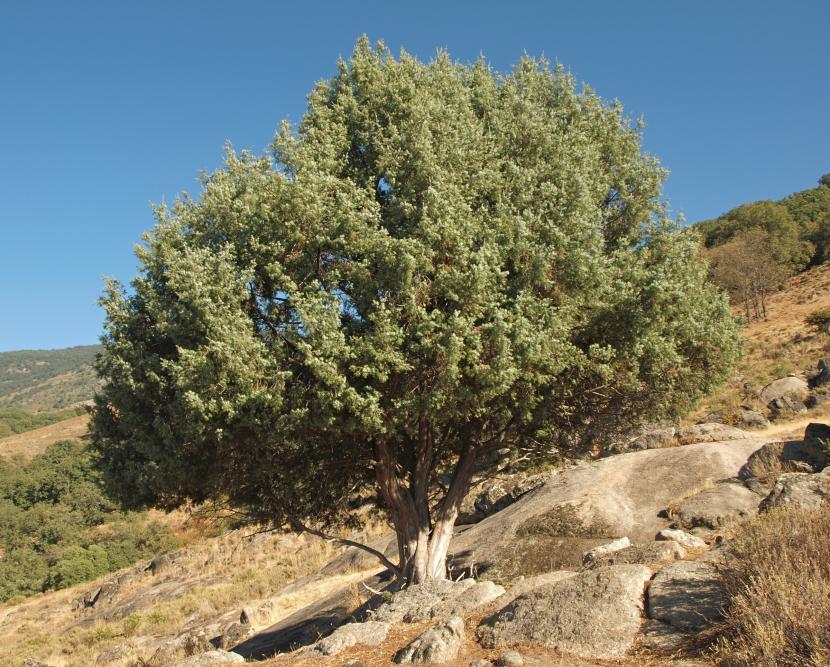
Juniperus oxycedrus
Juniper is a very hardy conifer, but an excess of humidity can favor the appearance of fungi, especially during spring, so a preventive treatment during this season with natural fungicides such as copper or sulfur, or with chemical products sold in nurseries, will help reduce the risk of the plant being affected by them.
As for pests, it can affect the cottony mealybug and Red spider. The former are effectively fought with Paraffin oil, but if the plague is very advanced it is preferable to use Chlorpyrifos or Imidacloprid. On the other hand, the spider mite is fought with Neem oil or potassium soap, but if the problem does not seem to be solved, or if it worsens, an miticide will be necessary.
Juniper uses
Besides as an ornamental plant, with their wood they are made from small objects, such as mortars, figures, bowls, boxes, etc. The fruits of the common juniper are also used (Juniperus communis) for the gin making and as medicinal.
Juniper properties
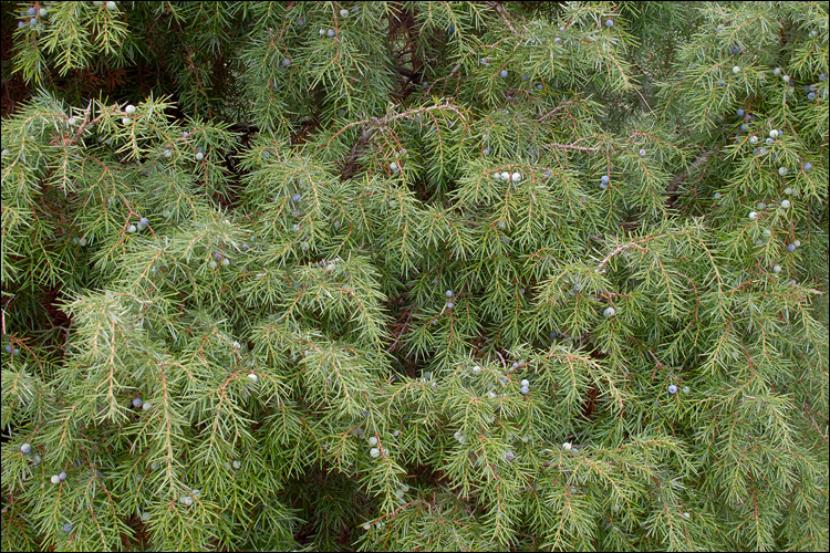
Juniperus communis
The January galbules have numerous medicinal properties. They are used so that both the kidneys, the bladder and the urethra work properly. What's more, can relieve the pain of gout and muscle and / or gastrointestinal problems.
What did you think of the juniper? Do you dare to decorate your garden with it? 🙂
